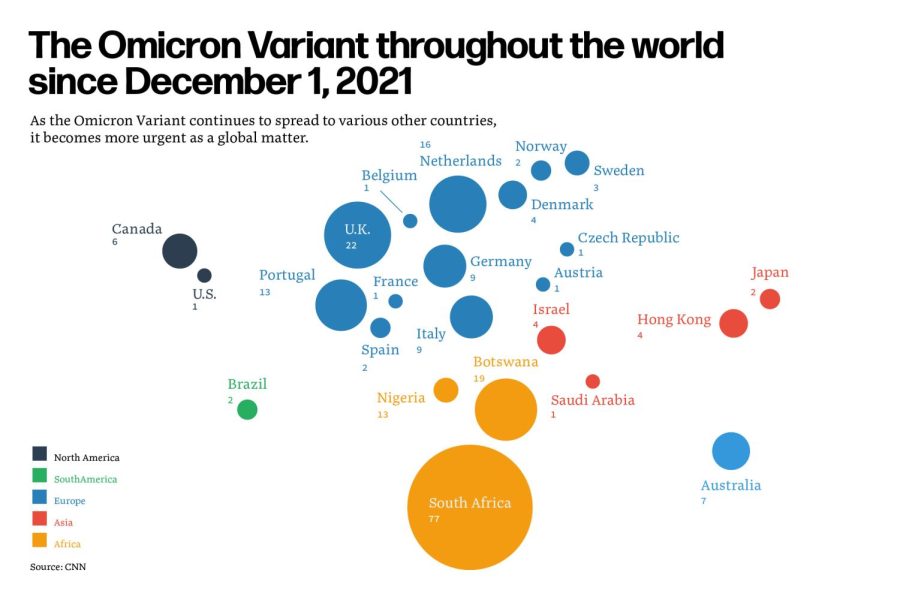Omicron variant continues to spread, public health officials expect transmission to Illinois
December 9, 2021
As the Omicron variant continues to spread, public health officials expect transmission to Illinois.
The Omicron variant was first classified by the World Health Organization on Nov. 26 and was labeled a variant of concern by the United States on Nov. 30, according to the Centers for Disease Control and Prevention.
The University is watchful of the variant as cases rise in the U.S. — 18 states have cases of the Omicron, not including Illinois.
“It has likely been in Europe and the U.S. and in other countries for a while prior to that first detection in South Africa,” said Rebecca Smith, epidemiologist and member of COVID-19 SHIELD.
There are a few COVID-19 mutations involving the spike protein, but it’s uncertain if the Omicron variant has it.
Get The Daily Illini in your inbox!
According to Smith, the virus uses the spike protein to get into cells. The immune system likes to attack when the spike protein is changed.
“Changing that spike protein a lot could mean that previous infection or vaccination might not be as effective because your immune system might not be able to recognize it as much,” Smith said.
Julie Pryde, public health administrator for the Champaign-Urbana Public Health District, said it will probably be three to four weeks before the public knows the implications of the Omicron variant.
Pryde believes it won’t take very long at all before it gets to Illinois.
“Once (it has) been identified anywhere in the world, when it’s a respiratory virus like this, it’s going to be everywhere before they can even figure that out,” Pryde said.
The Omicron variant has the S gene dropout, which is mutated to the point where tests won’t find it. So, if S dropouts are detected, the University will be suspicious of Omicron and take precautions accordingly.
Smith said that attending class in person is not a spread of risk.
“Because of our testing and our vaccination levels and because of the high levels of ventilation we have in our classrooms and the masks and the distancing, there have been no transmissions linked definitively to classrooms,” Smith said.
Pryde said the public needs to continue masking, distancing and hand washing.
“They’re just going to keep finding it, and eventually, one of two things is going to happen, either it will be more infectious and take over and become the predominant circulating strain like (the Delta variant) did or (the Delta variant) will continue,” Pryde said.







